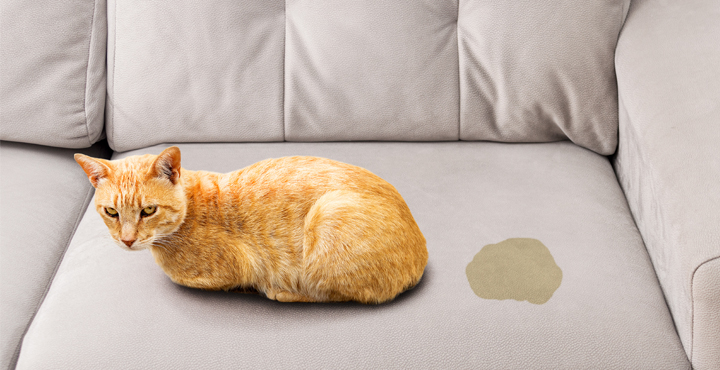
Bringing a new cat home should be carefully considered. With careful preparation, you can make the process of introducing a new cat smooth and simple.
Whiskas offers advice and top tips on how to introduce a new cat to the family…
Choosing the right cat
Firstly, you’ll need to carefully consider which type of cat to get. If you already have pets, think about how they might get on with the new cat in terms of character and temperament. Noisy, energetic cats probably won’t mix well with quiet, sleepy ones.
If you’re thinking of getting a kitten, bear in mind that although they pose less of a threat to older cats, they will be much more demanding and will want to play with other pets. Senior cats who prefer sleeping may find it difficult to adjust to a new, playful companion and will make their irritation obvious.
Preparing for the new arrival
Before you bring your new cat home, you’ll need to prepare your home properly.
Firstly, it’s a good idea to keep the new cat’s things separate to any other pet in the house, including bed and food bowl. Giving them their own space with no other pets around will make them feel more secure in their new surroundings. You should also make sure that cats can ‘escape’ if they are feeling stressed – this could include adding cat trees or shelves to your home.
Cats do not normally enjoy sharing resources, so multiple feeding stations and multiple litter trays need to be offered in homes with more than one cat. For this reason, don’t make your cats share the same food or bed space unless they are completely comfortable with each other.
Cats don’t seek companionship as much as humans or dogs – and some are happy to be completely solitary. It’s worth bearing in mind that some cats will never warm to one another – unless they are littermates, they rarely accept each other as close companions. They can learn to tolerate one another, but most will live independent lives within the same home. A tell-tale sign is mutual grooming – cats who are littermates, or who are not related but have accepted each other, will share a space and groom one another.
You could also try to introduce the new cat’s scents to the older cat before the new cat arrives, and vice versa. This can be done by swapping bedding beforehand or petting one cat before the other to mix the scents together.
How to introduce a new cat
When introducing a new cat, take things slowly. Let them explore at their own pace and don’t try to force them to do anything. Similarly, let existing pets get used to the new cat in their own time – you could use a barrier to separate them at first, so they can get used to each other’s scents. Forcing a hurried introduction may result in your cats feeling threatened, which can lead to aggression. If your cat demonstrates calm behaviour while in the presence of the new cat, reward them with a treat.
Using food to distract the two cats is a useful tip – hungry cats will be more interested in feeding and less interested in the newcomer. Keep food bowls far enough apart to avoid potential conflict.
When introducing cats to kittens, you may want to use a special kitten crate initially so the two can investigate each other through the bars. The cat in the crate needs to be provided with a ‘cave’ (cardboard box) which it can retreat to and feel safe. There may be some initial hissing, but things should calm down eventually. When safely introduced, ensure the older cat has somewhere to escape to if playtime gets too much.
When it comes to introducing a new cat, the main thing is to be patient. Existing cats are already settled into their routine and may resent this routine being disrupted by a new arrival. It may take weeks or months before your pets can coexist peacefully, so make sure you take things slowly and give the existing cat extra love and affection.
Whiskas offers advice and top tips on how to introduce a new cat to the family…
Choosing the right cat
Firstly, you’ll need to carefully consider which type of cat to get. If you already have pets, think about how they might get on with the new cat in terms of character and temperament. Noisy, energetic cats probably won’t mix well with quiet, sleepy ones.
If you’re thinking of getting a kitten, bear in mind that although they pose less of a threat to older cats, they will be much more demanding and will want to play with other pets. Senior cats who prefer sleeping may find it difficult to adjust to a new, playful companion and will make their irritation obvious.
Preparing for the new arrival
Before you bring your new cat home, you’ll need to prepare your home properly.
Firstly, it’s a good idea to keep the new cat’s things separate to any other pet in the house, including bed and food bowl. Giving them their own space with no other pets around will make them feel more secure in their new surroundings. You should also make sure that cats can ‘escape’ if they are feeling stressed – this could include adding cat trees or shelves to your home.
Cats do not normally enjoy sharing resources, so multiple feeding stations and multiple litter trays need to be offered in homes with more than one cat. For this reason, don’t make your cats share the same food or bed space unless they are completely comfortable with each other.
Cats don’t seek companionship as much as humans or dogs – and some are happy to be completely solitary. It’s worth bearing in mind that some cats will never warm to one another – unless they are littermates, they rarely accept each other as close companions. They can learn to tolerate one another, but most will live independent lives within the same home. A tell-tale sign is mutual grooming – cats who are littermates, or who are not related but have accepted each other, will share a space and groom one another.
You could also try to introduce the new cat’s scents to the older cat before the new cat arrives, and vice versa. This can be done by swapping bedding beforehand or petting one cat before the other to mix the scents together.
How to introduce a new cat
When introducing a new cat, take things slowly. Let them explore at their own pace and don’t try to force them to do anything. Similarly, let existing pets get used to the new cat in their own time – you could use a barrier to separate them at first, so they can get used to each other’s scents. Forcing a hurried introduction may result in your cats feeling threatened, which can lead to aggression. If your cat demonstrates calm behaviour while in the presence of the new cat, reward them with a treat.
Using food to distract the two cats is a useful tip – hungry cats will be more interested in feeding and less interested in the newcomer. Keep food bowls far enough apart to avoid potential conflict.
When introducing cats to kittens, you may want to use a special kitten crate initially so the two can investigate each other through the bars. The cat in the crate needs to be provided with a ‘cave’ (cardboard box) which it can retreat to and feel safe. There may be some initial hissing, but things should calm down eventually. When safely introduced, ensure the older cat has somewhere to escape to if playtime gets too much.
When it comes to introducing a new cat, the main thing is to be patient. Existing cats are already settled into their routine and may resent this routine being disrupted by a new arrival. It may take weeks or months before your pets can coexist peacefully, so make sure you take things slowly and give the existing cat extra love and affection.
Hey! Got any
cat questions?
Chat to us now














